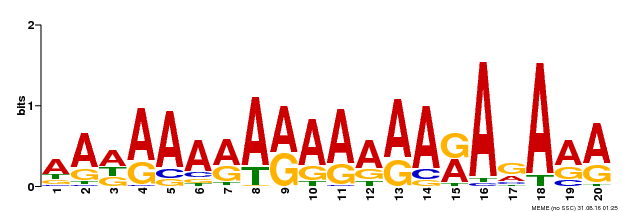- Todd J,Post-Beittenmiller D,Jaworski JG
KCS1 encodes a fatty acid elongase 3-ketoacyl-CoA synthase affecting wax biosynthesis in Arabidopsis thaliana.
Plant J., 1999. 17(2): p. 119-30
[PMID:10074711] - Krizek BA,Prost V,Macias A
AINTEGUMENTA promotes petal identity and acts as a negative regulator of AGAMOUS.
Plant Cell, 2000. 12(8): p. 1357-66
[PMID:10948255] - Riechmann JL, et al.
Arabidopsis transcription factors: genome-wide comparative analysis among eukaryotes.
Science, 2000. 290(5499): p. 2105-10
[PMID:11118137] - Boutilier K, et al.
Ectopic expression of BABY BOOM triggers a conversion from vegetative to embryonic growth.
Plant Cell, 2002. 14(8): p. 1737-49
[PMID:12172019] - Zhou C, et al.
Expression and function of HD2-type histone deacetylases in Arabidopsis development.
Plant J., 2004. 38(5): p. 715-24
[PMID:15144374] - Masaki T, et al.
ACTIVATOR of Spomin::LUC1/WRINKLED1 of Arabidopsis thaliana transactivates sugar-inducible promoters.
Plant Cell Physiol., 2005. 46(4): p. 547-56
[PMID:15753106] - Casson S,Spencer M,Walker K,Lindsey K
Laser capture microdissection for the analysis of gene expression during embryogenesis of Arabidopsis.
Plant J., 2005. 42(1): p. 111-23
[PMID:15773857] - Nawy T, et al.
Transcriptional profile of the Arabidopsis root quiescent center.
Plant Cell, 2005. 17(7): p. 1908-25
[PMID:15937229] - Nole-Wilson S,Tranby TL,Krizek BA
AINTEGUMENTA-like (AIL) genes are expressed in young tissues and may specify meristematic or division-competent states.
Plant Mol. Biol., 2005. 57(5): p. 613-28
[PMID:15988559] - Kim S,Soltis PS,Wall K,Soltis DE
Phylogeny and domain evolution in the APETALA2-like gene family.
Mol. Biol. Evol., 2006. 23(1): p. 107-20
[PMID:16151182] - Nakano T,Suzuki K,Fujimura T,Shinshi H
Genome-wide analysis of the ERF gene family in Arabidopsis and rice.
Plant Physiol., 2006. 140(2): p. 411-32
[PMID:16407444] - Brand L, et al.
A versatile and reliable two-component system for tissue-specific gene induction in Arabidopsis.
Plant Physiol., 2006. 141(4): p. 1194-204
[PMID:16896232] - Panjabi P,Burma PK,Pental D
Use of the transposable element Ac/Ds in conjunction with Spm/dSpm for gene tagging allows extensive genome coverage with a limited number of starter lines: functional analysis of a four-element system in Arabidopsis thaliana.
Mol. Genet. Genomics, 2006. 276(6): p. 533-43
[PMID:17004082] - Galinha C, et al.
PLETHORA proteins as dose-dependent master regulators of Arabidopsis root development.
Nature, 2007. 449(7165): p. 1053-7
[PMID:17960244] - Wang X, et al.
Overexpression of PGA37/MYB118 and MYB115 promotes vegetative-to-embryonic transition in Arabidopsis.
Cell Res., 2009. 19(2): p. 224-35
[PMID:18695688] - El Ouakfaoui S, et al.
Control of somatic embryogenesis and embryo development by AP2 transcription factors.
Plant Mol. Biol., 2010. 74(4-5): p. 313-26
[PMID:20798978] - Lutz KA,Azhagiri A,Maliga P
Transplastomics in Arabidopsis: progress toward developing an efficient method.
Methods Mol. Biol., 2011. 774: p. 133-47
[PMID:21822837] - Causier B,Ashworth M,Guo W,Davies B
The TOPLESS interactome: a framework for gene repression in Arabidopsis.
Plant Physiol., 2012. 158(1): p. 423-38
[PMID:22065421] - Aoyama T, et al.
AP2-type transcription factors determine stem cell identity in the moss Physcomitrella patens.
Development, 2012. 139(17): p. 3120-9
[PMID:22833122] - Efroni I, et al.
Regulation of leaf maturation by chromatin-mediated modulation of cytokinin responses.
Dev. Cell, 2013. 24(4): p. 438-45
[PMID:23449474] - Horstman A,Willemsen V,Boutilier K,Heidstra R
AINTEGUMENTA-LIKE proteins: hubs in a plethora of networks.
Trends Plant Sci., 2014. 19(3): p. 146-57
[PMID:24280109] - Horstman A, et al.
AIL and HDG proteins act antagonistically to control cell proliferation.
Development, 2015. 142(3): p. 454-64
[PMID:25564655] - Jin J, et al.
An Arabidopsis Transcriptional Regulatory Map Reveals Distinct Functional and Evolutionary Features of Novel Transcription Factors.
Mol. Biol. Evol., 2015. 32(7): p. 1767-73
[PMID:25750178] - Florez SL,Erwin RL,Maximova SN,Guiltinan MJ,Curtis WR
Enhanced somatic embryogenesis in Theobroma cacao using the homologous BABY BOOM transcription factor.
BMC Plant Biol., 2015. 15: p. 121
[PMID:25976599] - Lutz KA,Martin C,Khairzada S,Maliga P
Steroid-inducible BABY BOOM system for development of fertile Arabidopsis thaliana plants after prolonged tissue culture.
Plant Cell Rep., 2015. 34(10): p. 1849-56
[PMID:26156330] - Horstman A, et al.
The BABY BOOM Transcription Factor Activates the LEC1-ABI3-FUS3-LEC2 Network to Induce Somatic Embryogenesis.
Plant Physiol., 2017. 175(2): p. 848-857
[PMID:28830937] - Du Y,Scheres B
PLETHORA transcription factors orchestrate de novo organ patterning during Arabidopsis lateral root outgrowth.
Proc. Natl. Acad. Sci. U.S.A., 2017. 114(44): p. 11709-11714
[PMID:29078398] - Horstman A,Bemer M,Boutilier K
A transcriptional view on somatic embryogenesis.
Regeneration (Oxf), 2017. 4(4): p. 201-216
[PMID:29299323] - Klucher KM,Chow H,Reiser L,Fischer RL
The AINTEGUMENTA gene of Arabidopsis required for ovule and female gametophyte development is related to the floral homeotic gene APETALA2.
Plant Cell, 1996. 8(2): p. 137-53
[PMID:8742706] - Elliott RC, et al.
AINTEGUMENTA, an APETALA2-like gene of Arabidopsis with pleiotropic roles in ovule development and floral organ growth.
Plant Cell, 1996. 8(2): p. 155-68
[PMID:8742707] - Okamuro JK,Caster B,Villarroel R,Van Montagu M,Jofuku KD
The AP2 domain of APETALA2 defines a large new family of DNA binding proteins in Arabidopsis.
Proc. Natl. Acad. Sci. U.S.A., 1997. 94(13): p. 7076-81
[PMID:9192694] - Schneitz K,Baker SC,Gasser CS,Redweik A
Pattern formation and growth during floral organogenesis: HUELLENLOS and AINTEGUMENTA are required for the formation of the proximal region of the ovule primordium in Arabidopsis thaliana.
Development, 1998. 125(14): p. 2555-63
[PMID:9636071]
|





